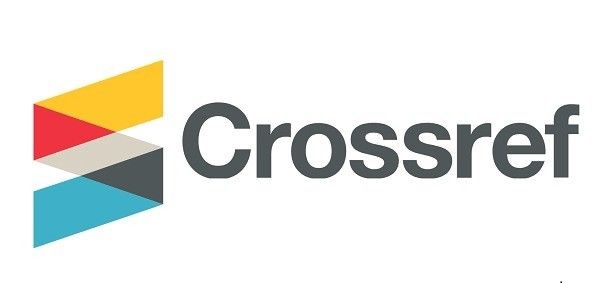Classification of Lung and Colon Cancer using Stacked Ensemble Learning of Multiple CNN Architectures
Keywords:
Lung cancer, Colon cancer, classification, Xception,MobileNetAbstract
The two most prevalent and deadly types of cancer globally are lung and colon. Early and accurate detection of these cancers is necessary for improving patient outcomes. It was found that machine learning techniques, especially deep learning models, have the ability to generate accurate detection and classification results when trained on big databases. This paper introduces a novel framework to classify five classes of lung and colon cancer using ensemble learning of multiple Convolutional Neural Network (CNN) architectures. First, these models are trained and the predictions resulting from applying them on the test subset of images are preserved, then an ensemble voting is used to select the best result from each model. Our approach was applied on a challenging dataset of 25000 images. The classification accuracy achieved was 98.47% which is higher than the accuracy achieved using the standalone models applied to the same dataset. The potential of our ensemble approach can be further improved in the future.
Downloads
References
N. Shahadat , R. Lama and A. Nguyen,” Lung and Colon Cancer Detection Using a Deep AI Model,” Cancers, 16, 3879, November 2024,DOI: 10.3390/cancers16223879.
J. D. Akinyemi, A. A. Akinola, O. O. Adekunle, T. O. Adetiloye, E. J. Dansu,” Lung and Colon Cancer Detection from CT Images Using Deep Learning,” Machine Graphics & Vision 32(1):85–97, 2023, Available: https://bibliotekanauki.pl/articles/3147620.pdf.
Y. LeCun, Y. Bengio, and G. Hinton, "Deep learning," nature, vol. 521, no. 7553, pp. 436-444, 2015.DOI: https://doi.org/10.1038/nature14539.
A. Esteva et al., "Dermatologist-level classification of skin cancer with deep neural networks," nature, vol. 542, no. 7639, pp. 115-118, 2017. DOI: https://doi.org/10.1038/nature21056.
S. Garg and S. Garg, “Prediction of lung and colon cancer through analysis of histopathological images by utilizing pre-trained cnn models with visualization of class activation and saliency maps,” in Proceedings of the 2020 3rd Artificial Intelligence and Cloud Computing Conference, 2020, pp. 38–45, DOI:https://doi.org/10.48550/arXiv.2103.12155.
S. U. K. Bukhari, A. Syed, S. K. A. Bokhari, S. S. Hussain, S. U. Armaghan, and S. S. H. Shah, “The histological diagnosis of colonic adenocarcinoma by applying partial self supervised learning,” MedRxiv, pp. 2020–08, 2020, DOI:https://doi.org/10.1101/2020.08.15.20175760.
M. Hosni, I. Abnane, A.Idri, J. M. C.D. Gea, J.L.F. Aleman, ” Reviewing ensemble classification methods in breast cancer,” Computer Methods and Programs in Biomedicine, Volume 177, pp. 89-112, August 2019, DOI: 10.1016/j.cmpb.2019.05.019.
A. A. Abro,” Vote-Based: Ensemble Approach,” Journal of Science, 25(3), pp. 871-879, 2021,DOI: https://doi.org/10.16984/saufenbilder.901960.
T. Akhtar, S. O. Gilani, Z. Mushtaq, S. Arif, M. Jamil, Y. Ayaz, S. I. Butt and A. Waris,” Effective Voting Ensemble of Homogenous Ensembling with Multiple Attribute-Selection Approaches for Improved Identification of Thyroid Disorder,” Electronics 10, 3026, 2021, DOI: 10.3390/electronics10233026.
M. Obayya, M.A.Arasi, N.Alruwais, R.Alsini, A.Mohamed, and I. Yaseen,” Biomedical Image Analysis for Colon and Lung Cancer Detection Using Tuna Swarm Algorithm With Deep Learning Model,” IEEE Access, 10.1109, 3309711, 2023, DOI: 10.1109/ACCESS.2023.3309711
M. Chen, S. Huang, Z. Huang, and Z. Zhang, “Detection of lung cancer from pathological images using cnn model,” in 2021 IEEE International Conference on Computer Science, Electronic Information Engineering and Intelligent Control Technology (CEI), IEEE, 2021. pp. 352–358, DOI: 10.1109/CEI52496.2021.9574590.
S. Hadiyoso, S. Aulia, I. D. Irawati, “Diagnosis of lung and colon cancer based on clinical pathology images using convolutional neural network and CLAHI framework,” International Journal of Applied Science and Engineering, vol. 20, no. 1, pp. 1–7, 2023, Available:https://gigvvy.com/journals/ijase/articles/ijase-202303-20-1-006.pdf.
M. A. Talukder, M. M. Islam, M. A. Uddin, A. Akhter, K. F. Hasan, and M. A. Moni, “Machine learning-based lung and colon cancer detection using deep feature extraction and ensemble learning,” Expert Systems with Applications, vol. 205, p. 117695, 2022, DOI: 10.1016/j.eswa.2022.117695.
B.K., Hatuwal, H.C. Tapa, “Lung Cancer Detection Using Convolutional Neural Network on Histopathological Images,” International Journal of Computer Trends and Technology, vol. 68, Issue 10, 21–24, 2020, DOI: 10.14445/22312803/IJCTT-V68I10P104 .
G. K. Raju, P. Padmanabham, and A. Govardhan, “Enhanced content-based image retrieval with trio-deep feature extractors with multi-similarity function,” International Journal of Intelligent Engineering & Systems, vol. 15, no. 6, 2022, DOI: 10.22266/ijies2022.1231.46.
A. Jimenez, J. M. Alvarez, and X. Giro-i Nieto, “Class weighted convolutional features for visual instance search,” arXiv:1707.02581, v. 1, 2017, DOI:https://doi.org/10.48550/arXiv.1707.02581.
A. G. Howard, M. Zhu, B. Chen, D. Kalenichenko, W. Wang, T. Weyand, M. Andreetto, and H. Adam, “Mobilenets: Efficient convolutional neural networks for mobile vision applications,” arXiv:1704.04861, v. 1, 2017, DOI:https://doi.org/10.48550/arXiv.1704.04861.
A. A. Borkowski, M. M. Bui, L. B. Thomas, C. P. Wilson, L. A. DeLand, and S. M. Mastorides, “Lc25000 lung and colon histopathological image dataset,” arXiv:1912.12142,v. 1, 2019,DOI: https://doi.org/10.48550/arXiv.1912.12142.
S. Anjum, I. Ahmed, M. Asif, H. Aljuaid, F. Alturise, Y. Y. Ghadi, R. Elhabob, et al., “Lung cancer classification in histopathology images using multiresolution efficient nets,” Computational Intelligence and Neuroscience, (1):1-12, 2023, DOI:https://doi.org/10.1155/2023/7282944
M.Masud, N.Sikder, A. A. Nahid, A. K. Bairagi, and M. A. AlZain, “A machine learning approach to diagnosing lung and colon cancer using a deep learning-based classification framework,” Sensors, vol. 21, no. 3, p. 748, 2021, DOI: https://doi.org/10.3390/s21030748
M.Ijaz, I.Ashraf ,U.Zahid, A.Yasin, S.Ali, M.A.Khan, S.A.Alqahtani,” : A Decision Support System for Lung Colon Cancer Classification using Fusion of Deep Neural Networks and Normal Distribution based Gray Wolf,” ACM Transactions on Asian and Low-Resource Language Information Processing, 2375-4699, 2023, DOI:https://doi.org/10.1145/3625096.
A. Provath, K. Deb, and K. Hyun,” Classification of Lung and Colon Cancer Using Deep Learning Method,” in “Frontiers of Computer Vision”, G.Irie, C.Shin,T.Shibata, K. Nakamura, IW-FCV 2023. Communications in Computer and Information Science, vol 1857, pp 56–70, 2023. DOI: 10.1007/978-981-99-4914-4_5.
S. Wadekar and D. K. Singh, “A modified convolutional neural network framework for categorizing lung cell histopathological image based on residual network, healthcare analytics, volume 4, 2023, 100224, 2023, DOI: 10.1016/j.health.2023.100224.
Downloads
Published
Issue
Section
License
Copyright (c) 2025 Basrah Researches Sciences

This work is licensed under a Creative Commons Attribution 4.0 International License.







